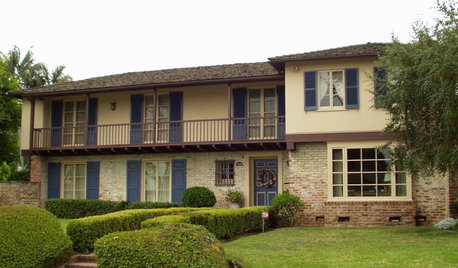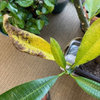Bare Root Plumeria Help
Michael O (USDA Z9 San Tan Valley AZ)
9 years ago
Related Stories

ARCHITECTURERoots of Style: Colonial Monterey Sets the Stage for Unique Design
French, Spanish and English features mix in enigmatic Monterey-style architecture. Here's how to recognize this type of home
Full Story
ARCHITECTURERoots of Style: Do You Live in a Minimalist Traditional House?
Cottages, bungalows, farmhouses ... whatever you call them, houses in this style share several characteristics. See how many your house has
Full Story
GARDENING GUIDESHow to Fix Bare and Yellow Lawn Spots
Restore your turf’s good looks by reseeding unsightly patches
Full Story
PETS6 Ways to Help Your Dog and Landscape Play Nicely Together
Keep your prized plantings intact and your dog happy too, with this wisdom from an expert gardener and dog guardian
Full Story
STANDARD MEASUREMENTSThe Right Dimensions for Your Porch
Depth, width, proportion and detailing all contribute to the comfort and functionality of this transitional space
Full Story
REMODELING GUIDESWisdom to Help Your Relationship Survive a Remodel
Spend less time patching up partnerships and more time spackling and sanding with this insight from a Houzz remodeling survey
Full Story
MOST POPULAR7 Ways to Design Your Kitchen to Help You Lose Weight
In his new book, Slim by Design, eating-behavior expert Brian Wansink shows us how to get our kitchens working better
Full Story
COLORPick-a-Paint Help: How to Create a Whole-House Color Palette
Don't be daunted. With these strategies, building a cohesive palette for your entire home is less difficult than it seems
Full Story
Figure Out Your Art Style
Bemoaning bare walls but flummoxed by all the choices for art? Here's help deciding on a style
Full Story
KITCHEN DESIGNKitchen of the Week: Creativity Shines in Seattle
Clever floor stencils and reused materials keep this Seattle kitchen true to its 1917 roots
Full StoryMore Discussions







the_first_kms2
Michael O (USDA Z9 San Tan Valley AZ)Original Author
Related Professionals
Clark Landscape Architects & Landscape Designers · Hershey Landscape Architects & Landscape Designers · Manorville Landscape Architects & Landscape Designers · Panama City Landscape Architects & Landscape Designers · Buford Landscape Contractors · Laguna Hills Landscape Contractors · Lemont Landscape Contractors · Lexington Landscape Contractors · North Highlands Landscape Contractors · Olympia Landscape Contractors · San Bruno Landscape Contractors · Smyrna Landscape Contractors · Kennewick Siding & Exteriors · Liberty Siding & Exteriors · Racine Siding & Exteriorstapapoi
plumejunkie
toomanydogs
plumejunkie
plumejunkie